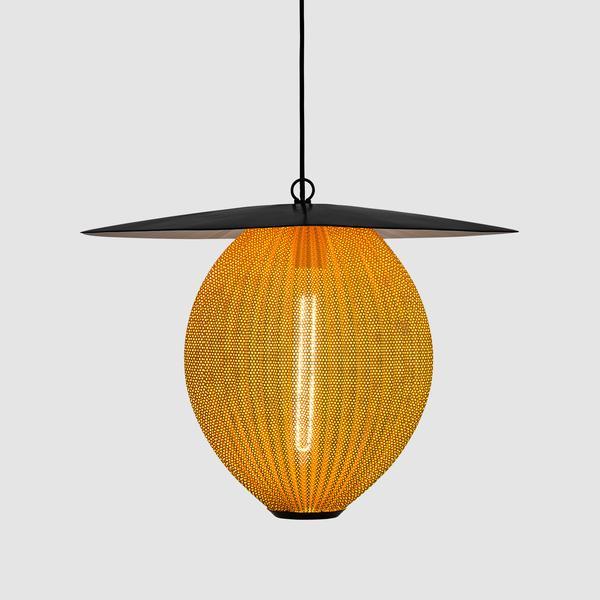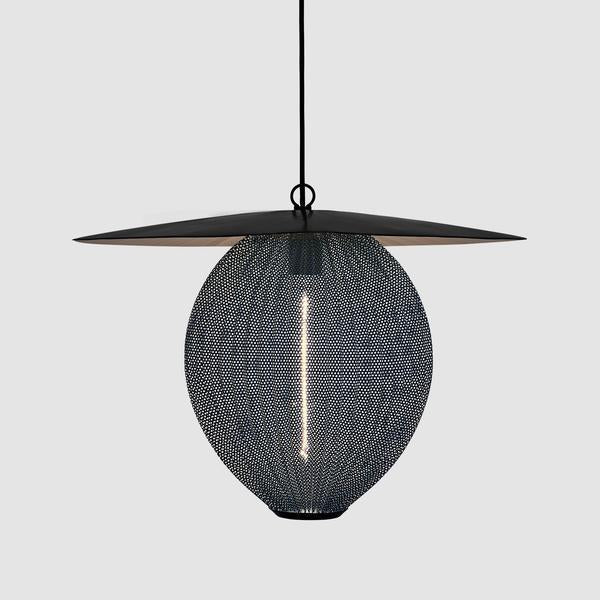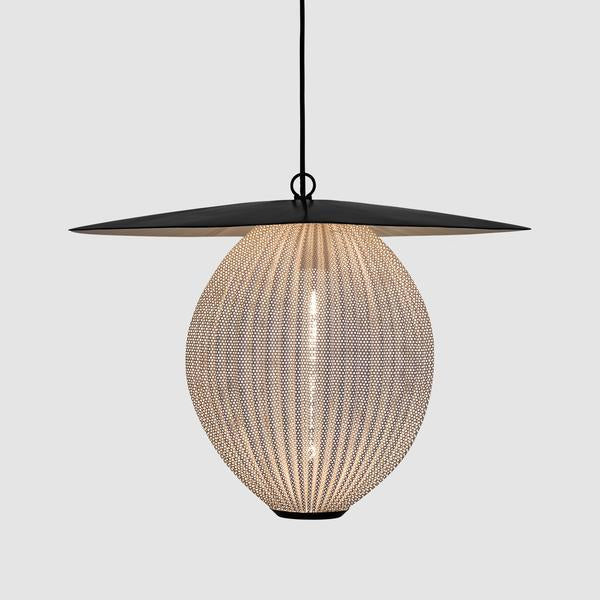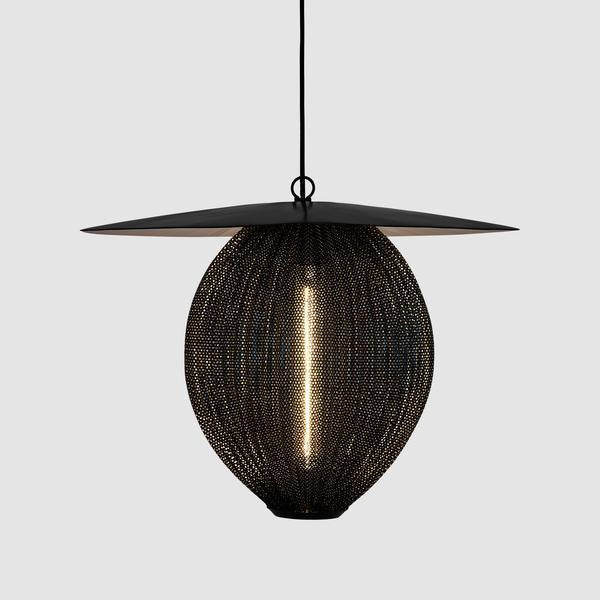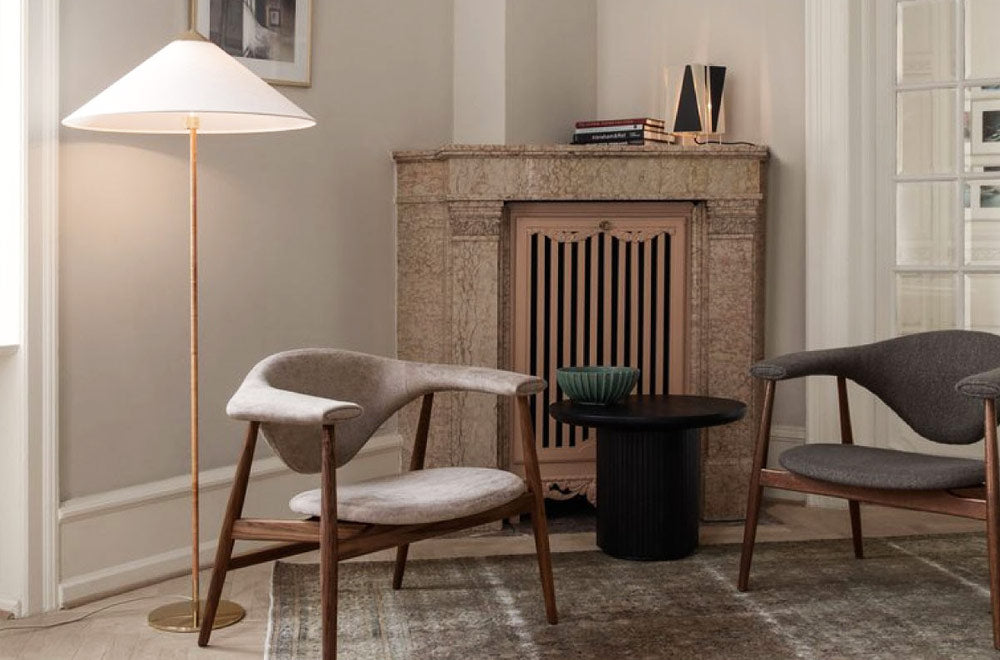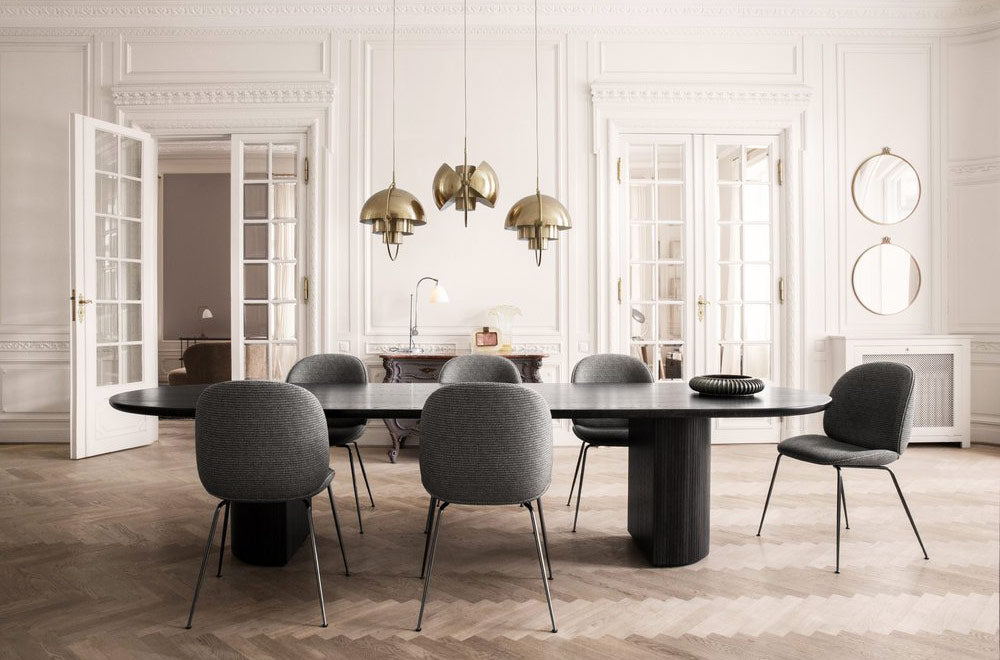The Satellite Pendant of two sizes is designed by Mathieu Matégot in 1953 with geometrical shapes and an organic shade to create outstanding sculptural aesthetics. The name, Satellite, was given by Matégot as a wink and tribute to the scientific progress in France in the years after the Second World War.
The Satellite Pendant holds the distinctive trait of Rigitulle, a technique and material invented by the designer himself that makes it possible to bend and fold the fabric-like metal sheet to an original, oblong shaped pendant lamp. The lampshade has five colour options; midnight black, white cloud, shy cherry, venetian gold and rainy grey, and is unique with its bulb all covered by perforated metal to exude an atmospheric light - creating a festive appearance. The interplay of light and shadow casted on walls and floors generate a dramatic feature in any dining room, hallway or restaurant. Hang the Satellite Pendant alone as a characteristic piece or in multiples to create a cloud of luminosity.
Select finishes on shortened 2-3 week lead time. Standard lead time is 18-20 weeks. Contact us for more information.
Mathieu Matégot (1910 - 2001) was a Hungarian designer and architect. After studying at Budapest's school of art and architecture, he settled in France in 1931. He was a volunteer in the French army, was captured and not released until 1944. After returning home, he started producing handmade furniture in Paris. Matégot's organic forms and lightness of touch create a sense of joy and the ground breaking and innovative techniques that he applied resulted in unique aesthetics and furniture designs. He was the first person to combine metal tubing with perforated sheet metal; ritigulle, a technique he patented and also a pairing that particularly characterizes his work. Like many of his peers Mategot travelled the world in search of inspiration, techniques and upon return transformed these impressions into his own unique designs and interpretations. Wether it was industrial processes or aesthetics, he always collected and interpreted - he even patented and set up his own production to apply these new technologies into his designs, He was a true innovator of his time! In the 1950's - also the one decade - that he devoted to the design of furniture and interior accessories, he created a wide range of distinctive designs that today is considered iconic and contemporary. To ensure quality in the production of his own designs - Matégot set up two of his own workshops - Société Mategot, one in Paris that employed up to twenty workers and a second in Casablanca, Morocco. Both manufactured in limited numbers for up to 200 items and continued until 1959 when Mategot abruptly ended his production and began his work on tapestry, which he would continue for the rest of his career.








